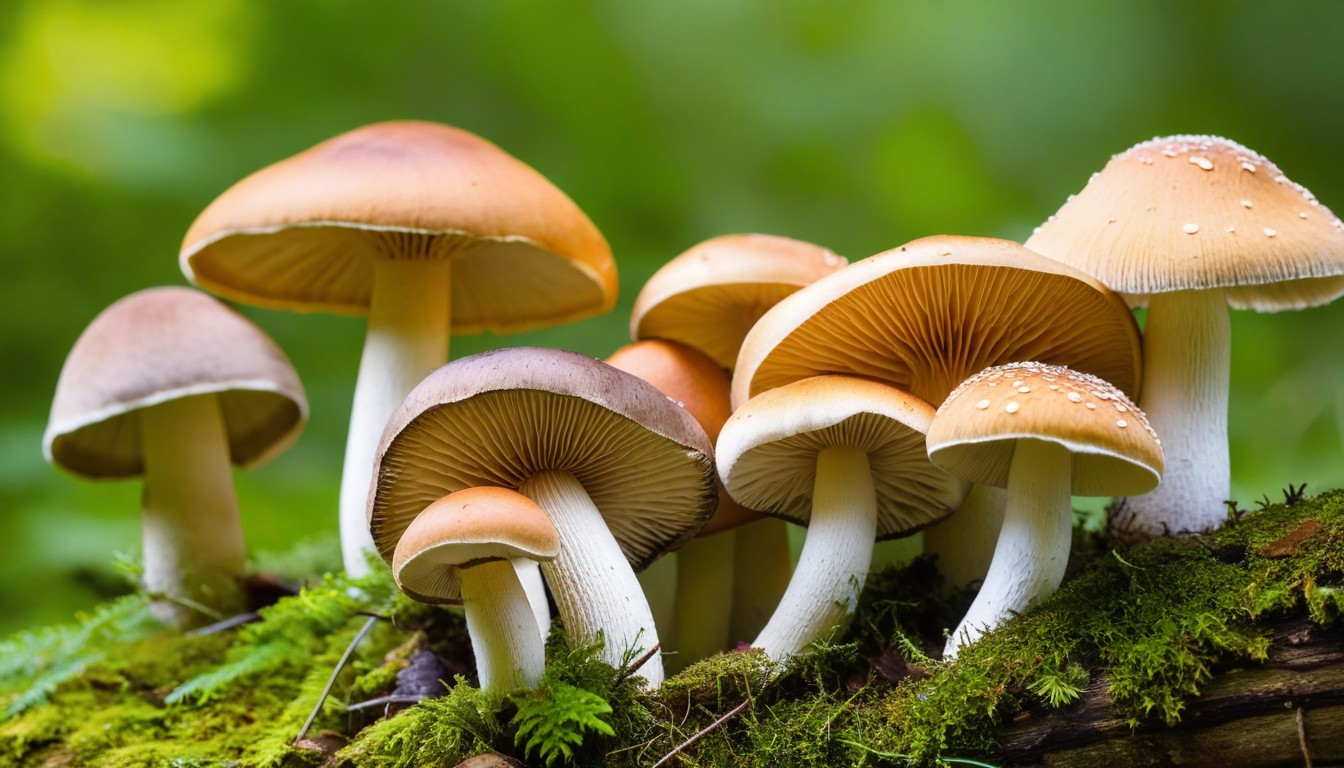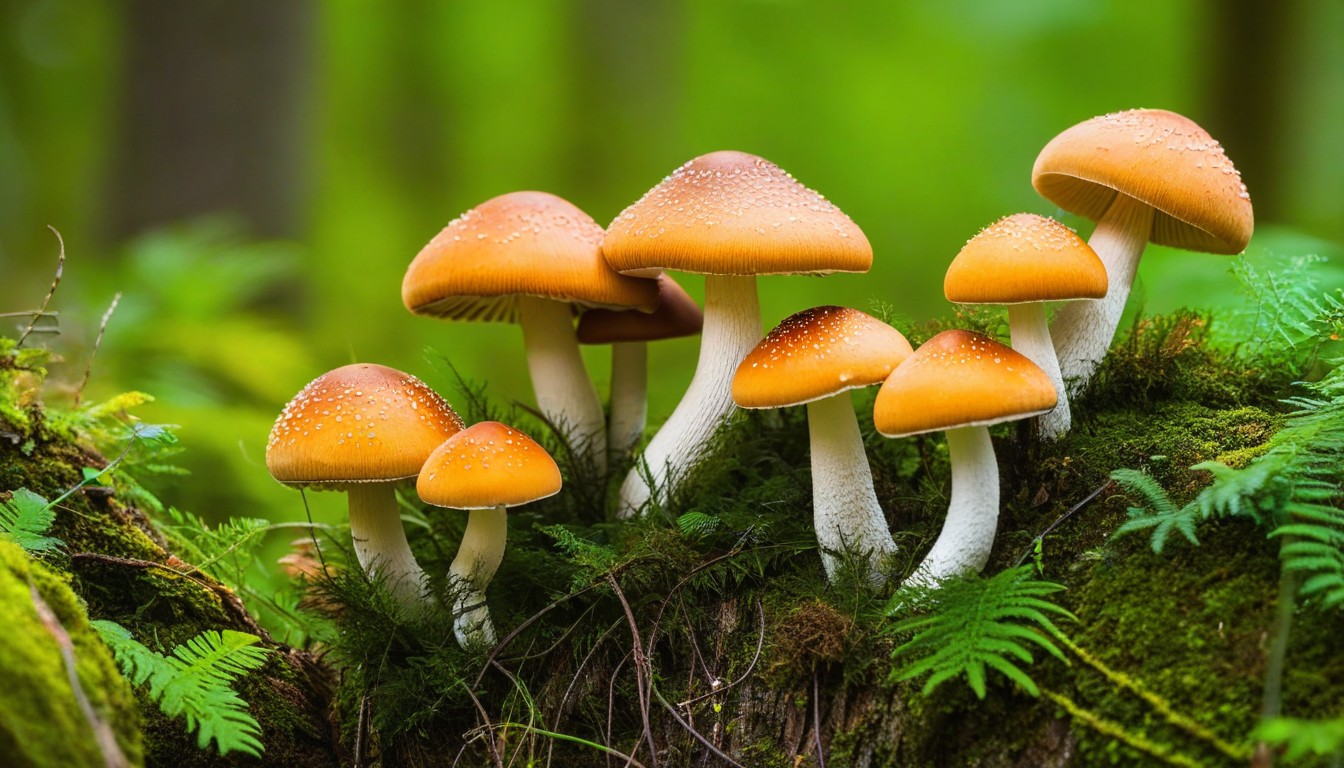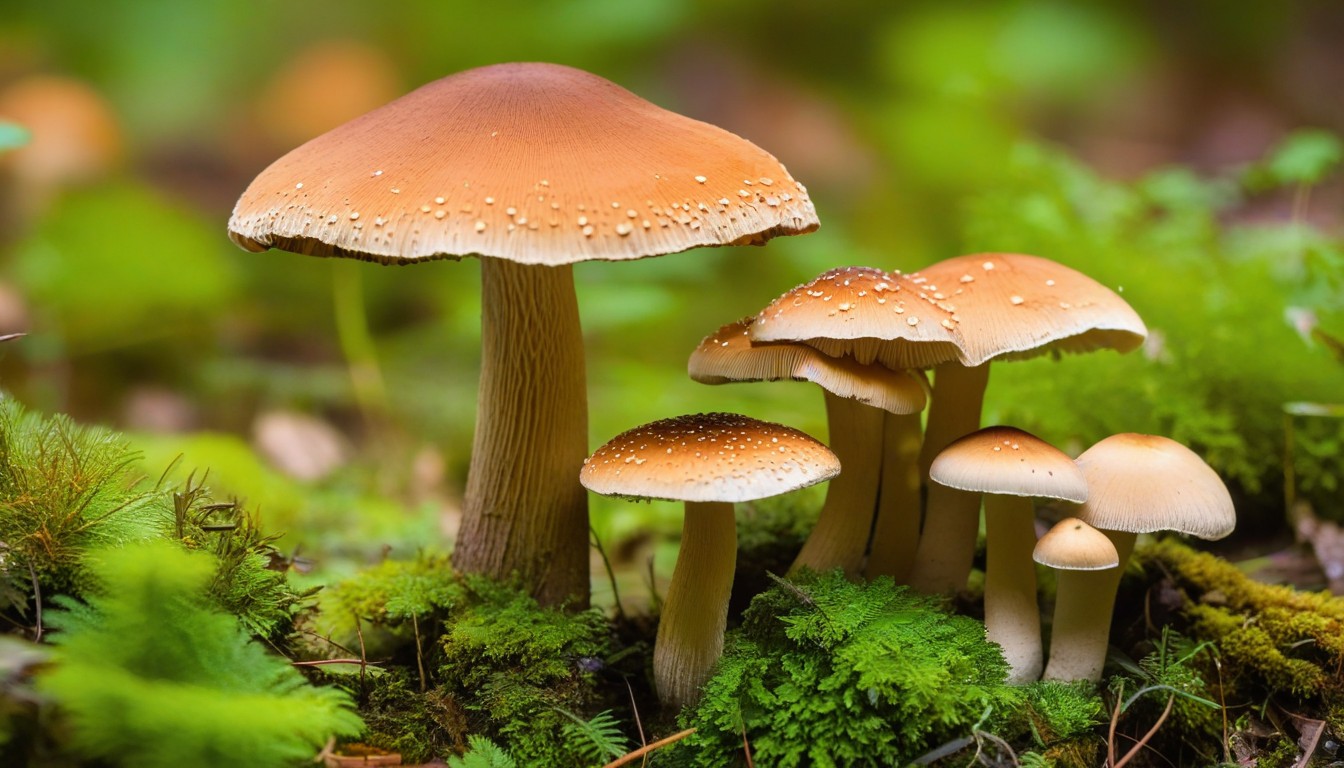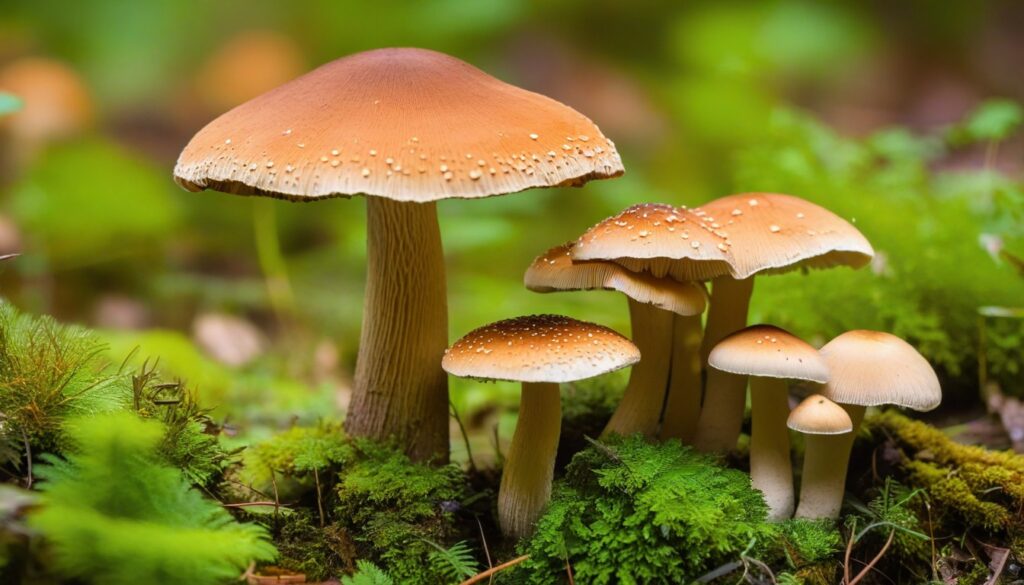Connecticut is renowned for its stunning natural beauty, with lush forests and rolling hills that make it the perfect haven for mushroom foraging. If you’re a fan of mushroom picking or simply love exploring the wild landscapes of the Nutmeg State, then you’ll be delighted to know that Connecticut is home to a vast array of edible mushrooms that are both delicious and packed with nutrients. Join us as we explore the diverse world of edible mushrooms in Connecticut and discover the many ways you can enjoy these delectable delicacies.
Key Takeaways
- Connecticut is a treasure trove of edible mushrooms waiting to be discovered
- Mushroom foraging is a thrilling pastime that can be enjoyed by all ages
- Knowing how to identify edible mushrooms and avoid poisonous look-alikes is crucial for a safe foraging experience
- Cooking with edible mushrooms can enhance the flavor and nutritional value of your meals
- Conservation and sustainable practices are vital for ensuring the availability of edible mushrooms in the future
Types of Edible Mushrooms in Connecticut
Connecticut boasts a wide variety of edible mushrooms that can be found in its lush forests. Whether you’re a seasoned forager or a beginner, there’s always something new to discover.
1. Chanterelles
These bright yellow mushrooms are a prized find for many foragers. They have a delicate, fruity aroma and a slightly peppery taste.
2. Morels
Known for their distinctive honeycomb appearance, morels are a favorite among chefs and foragers alike. They have a nutty, earthy flavor and pair well with a wide range of dishes.
3. Hen of the Woods
Also known as maitake, these mushrooms have fan-like clusters and a meaty texture. They have a subtle, earthy flavor and are commonly used in soups and stews.
4. Black Trumpet
These trumpet-shaped mushrooms have a delicate, smoky flavor and are often used in sauces and risottos. They can be difficult to spot, but their unmistakable aroma makes them worth the effort.
|
Mushroom Type |
Appearance |
Taste |
Culinary Uses |
|---|---|---|---|
|
Chanterelles |
Bright yellow, smooth cap with false gills |
Delicate, fruity, slightly peppery |
Sautéed, in sauces, with eggs, in risottos |
|
Morels |
Honeycomb appearance, light brown to black in color |
Nutty, earthy |
Stuffed, sautéed, in sauces, with meats |
|
Hen of the Woods |
Fan-like clusters, gray-brown in color |
Subtle, earthy |
Grilled, roasted, in soups and stews |
|
Black Trumpet |
Trumpet-shaped, black in color |
Delicate, smoky |
In sauces, in risottos, with meats |
Other edible mushrooms that can be found in Connecticut include porcini, oyster mushrooms, and shiitake mushrooms. As always, it’s important to properly identify each mushroom before consuming it, and to only forage in areas that are permitted for mushroom hunting.
Best Locations for Mushroom Foraging in Connecticut
Connecticut is a mushroom forager’s paradise, offering a wide range of habitats to explore and discover delicious fungi. Here are the top locations to find your next edible treasure:
|
Location |
Types of Mushrooms Found |
|---|---|
|
Meshomasic State Forest |
Chanterelles, Morels, Boletes, Hen of the Woods, Chicken of the Woods, Reishi |
|
West Rock Ridge State Park |
Chanterelles, Oysters, Maitake, Hen of the Woods, Chicken of the Woods |
|
White Memorial Conservation Center |
Morels, Maitake, Chanterelles, Blue Chanterelles |
|
Devil’s Hopyard State Park |
Morels, Oysters, Chanterelles, Boletes |
|
Gay City State Park |
Chanterelles, Boletes, Oysters, Chicken of the Woods |
Aside from these top locations, be sure to also check out state parks, nature preserves, and even your own backyard to uncover more hidden mushroom gems.
Remember to always forage responsibly and with sustainable practices in mind, only taking what you need and leaving the rest for future generations to enjoy.
Common Edible Mushrooms in Connecticut

Connecticut is home to a variety of edible mushrooms, each with its own unique flavor and culinary uses. Here are some of the most commonly found edible mushrooms in Connecticut:
|
Mushroom |
Appearance |
Taste |
Culinary Uses |
|---|---|---|---|
|
Chanterelle |
Golden to yellow, apricot-like hue, wavy cap, false gills (ridges) |
Buttery, fruity, slightly peppery |
Pair with lean meats, seafood, vegetables, soups, sauces, risottos |
|
Morel |
Cone-shaped, spongy, with dark honeycomb-like pits and ridges |
Nutty, earthy, smoky |
Sautéed with onions and garlic, used in cream sauces, omelets, soups, and pasta dishes |
|
Hen of the woods (maitake) |
Feathery, fan-shaped, grayish-brown, with wavy white-brown gills |
Earthy, meaty, nutty, slightly spicy |
Grilled or roasted as steaks, sautéed with onions, paired with rice, beans, or cream-based dishes |
|
Black trumpet |
Funnel-shaped, with wavy black to grayish-brown ridges |
Fruity, aromatic, smoky |
Best when roasted or sautéed with garlic, shallots, butter, and cream; used in sauces, soups, and stews |
|
Oyster |
Shell-shaped, with a white-gray to brown cap, visible gills, thin and delicate |
Slightly sweet, delicate, with a hint of anise |
Baked or fried as fritters, stir-fried with vegetables, used in cream soups and pasta dishes |
These are just a few examples of the many edible mushrooms that can be found in Connecticut’s forests. When foraging for mushrooms, always properly identify them before consuming and cook them thoroughly to avoid any potential health risks.
Tips for Safe Mushroom Foraging in Connecticut

Foraging for mushrooms in Connecticut can be a fun and rewarding experience, but it’s important to take precautions to ensure your safety. Follow these tips for safe mushroom foraging:
- Identification: Be absolutely certain of the identification of any mushroom you plan to pick and consume. Use a reliable field guide and, if in doubt, seek advice from a knowledgeable and experienced mushroom hunter.
- Harvesting: Only pick mushrooms that are in good condition and avoid damaged, slimy, or discolored specimens. Cut the mushrooms neatly at their base with a sharp knife or scissors, leaving the underground portion intact.
- Cooking: Always cook wild mushrooms thoroughly before consuming them. Raw mushrooms may contain harmful toxins and are difficult to digest. Boiling, baking, or sautéing are safe cooking methods.
- Environment: Avoid foraging in polluted or contaminated areas, such as near highways, industrial sites, or areas with high levels of pesticide or fertilizer use. Avoid trampling the forest floor and always remove litter or debris.
- Partner up: Go mushroom hunting with a friend or fellow enthusiast. Not only is it more fun to share the experience, but you can also look out for each other in case of any accidents.
Following these tips will ensure that your mushroom foraging trip in Connecticut is a safe and enjoyable one. Happy hunting!
Cooking with Edible Mushrooms from Connecticut
After a successful mushroom foraging trip in Connecticut’s enchanting forests, it’s time to put your harvest to use and whip up some delicious dishes. Edible mushrooms are versatile and can be used in many recipes from savory to sweet. Here are some delightful ways to make the most out of the mushrooms you found:
- Grilled Portobello Mushroom Burger: Skip the meat and try a flavorful grilled Portobello burger. Marinate your Portobello mushrooms in olive oil, balsamic vinegar, and garlic, and grill until tender. Serve them on a toasted bun with your favorite toppings.
- Mushroom Risotto: A classic and indulgent recipe that is sure to satisfy your cravings. Sauté your mushrooms in butter and garlic, and then add arborio rice, white wine, and chicken broth. Keep stirring until the rice is creamy and cooked perfectly.
- Mushroom and Cheese Omelet: Start your day off right with a protein-packed mushroom and cheese omelette. Sauté your mushrooms in butter and garlic, and then add them to your fluffy omelette with cheddar cheese. Breakfast never tasted so good!
The Flavor Profile of Edible Mushrooms
When it comes to cooking with edible mushrooms, the flavor profile will vary depending on the type of mushroom. Here are a few examples of the distinct flavor profiles of some common Connecticut mushrooms:>
|
Mushroom |
Flavor Profile |
|---|---|
|
Chanterelle |
Earthy, nutty, and slightly fruity |
|
Hen of the Woods |
Earthy, mild, and delicate |
|
Morel |
Nutty, earthy, and smoky |
|
Porcini |
Earthy, nutty, and meaty |
Experiment with different types of edible mushrooms and discover your favorite flavor combinations. Don’t be afraid to get creative and try new things in the kitchen. Share your tasty mushroom creations with family and friends, and enjoy the unique taste of Connecticut’s forests in every bite.
Health Benefits of Edible Mushrooms

Not only are edible mushrooms a tasty addition to your meals, but they also offer numerous health benefits.
Studies have shown that consuming edible mushrooms can help boost your immune system, thanks to the presence of beta-glucans, a type of polysaccharide. These compounds can enhance the activity of your white blood cells, which are responsible for fighting off infections and diseases.
Additionally, edible mushrooms are rich in antioxidants, which help protect your cells against damage from harmful molecules called free radicals. This can reduce your risk of developing chronic diseases such as heart disease, cancer, and Alzheimer’s disease.
Some specific types of mushrooms, such as shiitake, maitake, and reishi, also contain compounds that have been shown to have anti-inflammatory properties, which can help reduce swelling and pain in the body.
|
Mushrooms |
Health Benefits |
|---|---|
|
Shiitake |
Boost immune system, anti-inflammatory |
|
Maitake |
Boost immune system, anti-cancer properties |
|
Reishi |
Reduce inflammation, lower blood pressure |
These are just a few examples of the many health benefits that can be gained from incorporating edible mushrooms into your diet. So next time you are out foraging in the forests of Connecticut, remember that not only are you finding delicious ingredients for your next meal, but you are also nourishing your body with natural goodness.
Mushroom Foraging Events and Workshops in Connecticut
Immerse yourself in the world of mushroom foraging by joining one of Connecticut’s upcoming events or workshops, where you can learn from experienced foragers and take your skills to the next level.
Upcoming Mushroom Foraging Events
|
Event Name |
Date and Time |
Location |
Description |
|---|---|---|---|
|
Connecticut Mushroom Foraging Club |
Every second Saturday of the month, 10am-12pm |
Various locations, Connecticut |
Join the club for a monthly guided foray through Connecticut’s forests, led by experienced foragers. Learn about mushroom identification, harvesting, and cooking, and meet other enthusiasts. |
|
Forage Fest: Mushroom Edition |
June 26, 2021, 11am-3pm |
New Haven, Connecticut |
Celebrate the abundance of edible mushrooms in Connecticut with a festival featuring local food and drink vendors, workshops on mushroom identification and cooking, and a guided foray through Edgewood Park. |
|
Winding Trails Mushroom Walk |
October 2, 2021, 10am-12pm |
Winding Trails, Farmington, Connecticut |
Take a leisurely walk through the Winding Trails Nature Preserve, led by a naturalist and experienced forager. Learn about the different types of edible mushrooms that can be found in Connecticut’s forests, and enjoy a picnic lunch afterwards. |
Upcoming Mushroom Foraging Workshops
- Mushroom Identification and Safety Workshop: Learn how to differentiate between edible mushrooms and their poisonous look-alikes, ensuring a safe and enjoyable foraging experience. Led by a mycologist, this workshop will cover mushroom biology, identification tips, and common toxic species to avoid.
- Cooking with Wild Mushrooms: Discover the art of cooking with wild mushrooms, from basic sautéing techniques to complex recipes that highlight the unique flavors and textures of different species. Led by a professional chef, this workshop will include a foraging session followed by a cooking demonstration and tasting.
- Mushroom Foraging Basics: If you’re new to mushroom foraging, this workshop is the perfect introduction to the world of wild mushrooms. Learn about the basic tools and equipment needed for foraging, as well as identification techniques and safety tips. Led by experienced foragers, this workshop will include a guided foray followed by a picnic lunch.
With these upcoming events and workshops, there’s no better time to enhance your knowledge and skills in the thrilling world of mushroom foraging. Don’t miss out on this exciting opportunity to explore the natural wonders of Connecticut and discover the delicious mushrooms that call it home.
Conservation and Sustainability of Edible Mushrooms in Connecticut

Foraging for edible mushrooms can be a fun and rewarding experience, but it’s important to remember to do so sustainably. Many wild mushroom species are fragile, and over-harvesting can have a negative impact on their ability to grow and reproduce.
Here are some tips for conserving and sustainably foraging edible mushrooms in Connecticut:
- Only take what you need, and leave enough mushrooms behind to allow them to grow and disperse spores for future harvests.
- Don’t damage the surrounding area when harvesting mushrooms. Be mindful of other plant and animal species and avoid trampling on them.
- Be aware of the rules and regulations regarding mushroom foraging in specific areas such as state parks and wildlife refuges and adhere to them.
- Consider joining a local mycological society or attending workshops to learn more about sustainable mushroom foraging practices and conservation efforts.
Supporting Sustainable Mushroom Foraging in Connecticut
Connecticut has several organizations working towards sustainable mushroom foraging and conservation efforts. The Connecticut-Westchester Mycological Association (COMA) hosts events and workshops promoting the love and appreciation for mushrooms while advocating for their conservation and sustainable harvesting. The state also has regulations in place which limits the number of mushrooms that can be harvested per person to protect the mushroom population from unsustainable harvesting.
“I am pleased to see how much the state of Connecticut values the sustainable harvesting of wild edible mushrooms,” says John Smith, a local mushroom enthusiast. “By regulating the number of mushrooms that can be harvested, it ensures that we can continue to forage for years to come while preserving the natural beauty of our forests.”
By following sustainable practices and supporting conservation efforts, we can ensure a future that includes the excitement and joy of foraging for edible mushrooms in the beautiful state of Connecticut.
Edible Mushrooms versus Poisonous Look-alikes
When foraging for mushrooms in Connecticut, it is essential to differentiate between the edible ones and their poisonous look-alikes. Mistaking a poisonous mushroom for an edible one can lead to serious health consequences, so it’s crucial to know the difference.
One of the most common look-alikes found in Connecticut is the Fool’s Mushroom which looks similar to the edible Chanterelle Mushroom. However, the Fool’s Mushroom has a white spore print while the Chanterelle has a yellowish one.
Another look-alike is the Green-spored Parasol Mushroom, which resembles the edible Parasol Mushroom. To differentiate between the two, check the color of the spores. If they are greenish, then the mushroom is not fit for consumption.
|
Edible Mushrooms |
Poisonous Look-alikes |
|---|---|
|
Chanterelle Mushroom |
Fool’s Mushroom |
|
Parasol Mushroom |
Green-spored Parasol Mushroom |
Remember, it’s better to err on the side of caution when dealing with mushrooms. If you’re not completely sure about the identity of a mushroom, don’t consume it. Instead, consult a local expert or a field guide to help you identify the mushroom properly.
Conclusion
Connecticut is a mushroom lover’s paradise, with a wide variety of edible mushrooms growing in its lush forests. From the meaty and flavorful porcini to the delicate and nutty chanterelles, there’s a mushroom out there for every palate.
While foraging for edible mushrooms can be an exciting adventure, it’s important to follow safety guidelines and only consume mushrooms that are positively identified as edible. Proper identification, harvesting, and cooking are crucial to ensuring a safe and enjoyable experience.
With the right knowledge and precautions, foraging for edible mushrooms in Connecticut can be a rewarding and delicious experience. Whether you’re a seasoned forager or a curious novice, Connecticut offers a wealth of resources and workshops to enhance your knowledge and skills.
Remember to always practice conservation and sustainable foraging practices to help preserve the future availability of these natural delicacies. So, put on your hiking boots and grab your basket, it’s time to head out and discover the wonderful world of edible mushrooms in Connecticut.
FAQ
What are edible mushrooms?
Edible mushrooms are fungi that are safe and suitable for consumption. They can be found in various habitats and have culinary uses.
Are all mushrooms in Connecticut edible?
No, not all mushrooms in Connecticut are edible. Some mushrooms can be toxic or poisonous. It is important to properly identify mushrooms before consuming them.
How do I identify edible mushrooms?
Identifying edible mushrooms requires knowledge and experience. It is recommended to consult field guides, join local foraging groups, or seek guidance from experts.
Can I forage for mushrooms in Connecticut?
Yes, mushroom foraging is permitted in Connecticut. However, it is important to obtain the necessary permits and follow regulations set by the state or local authorities.
Where can I forage for mushrooms in Connecticut?
There are several prime locations for mushroom foraging in Connecticut, such as state parks, forests, and nature reserves. Researching and exploring these areas can lead to successful foraging.
How do I harvest mushrooms responsibly?
Responsible mushroom harvesting involves only collecting mushrooms that are identified as edible, leaving behind immature or rare species, and minimizing damage to the surrounding environment.
What are some popular edible mushrooms in Connecticut?
Some of the popular edible mushrooms in Connecticut include Morel mushrooms, Chanterelles, Hen of the Woods, and Chicken of the Woods.
Can I sell the mushrooms I forage in Connecticut?
Selling foraged mushrooms in Connecticut may require a commercial license. It is essential to check the local regulations and obtain the necessary permits before selling any wild-harvested mushrooms.
Are there any poisonous mushrooms in Connecticut?
Yes, there are poisonous mushrooms in Connecticut. It is crucial to be able to identify poisonous mushrooms and avoid consuming them to prevent any health risks.
Can mushrooms be cooked in various dishes?
Absolutely! Edible mushrooms can be used in a wide range of culinary dishes including soups, stir-fries, pasta dishes, sauces, and even as toppings for pizzas and burgers.
Are there any health benefits to consuming edible mushrooms?
Yes, edible mushrooms have numerous health benefits. They are a good source of vitamins, minerals, antioxidants, and have been associated with boosting the immune system and promoting heart health.
Can I attend mushroom foraging workshops in Connecticut?
Yes, there are mushroom foraging workshops and events that take place in Connecticut. These workshops provide hands-on experience and valuable knowledge about mushroom identification and foraging techniques.
How can I contribute to the conservation of edible mushrooms in Connecticut?
You can contribute to the conservation of edible mushrooms in Connecticut by practicing sustainable foraging techniques, respecting the natural habitats, and promoting awareness about the importance of conservation.
What should I do if I suspect mushroom poisoning?
If you suspect mushroom poisoning, seek immediate medical attention. Do not induce vomiting without professional advice and try to save a sample of the mushroom for identification purposes.

